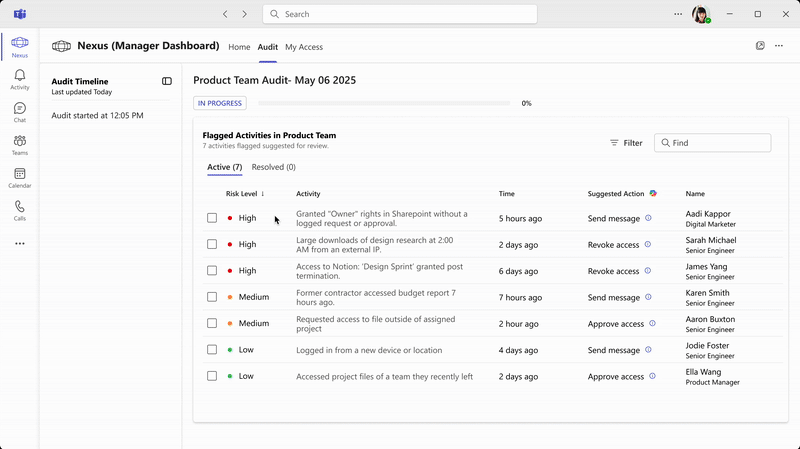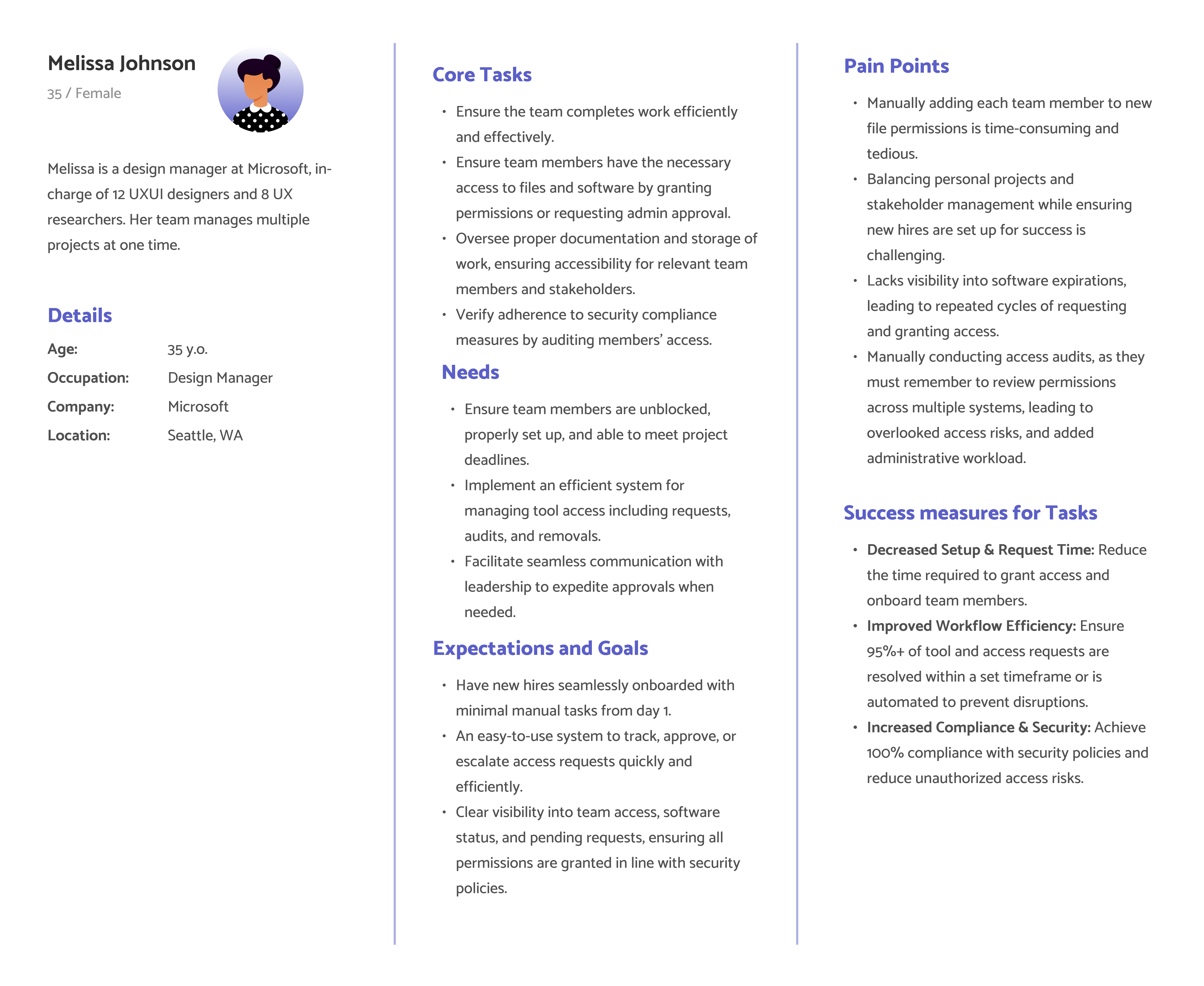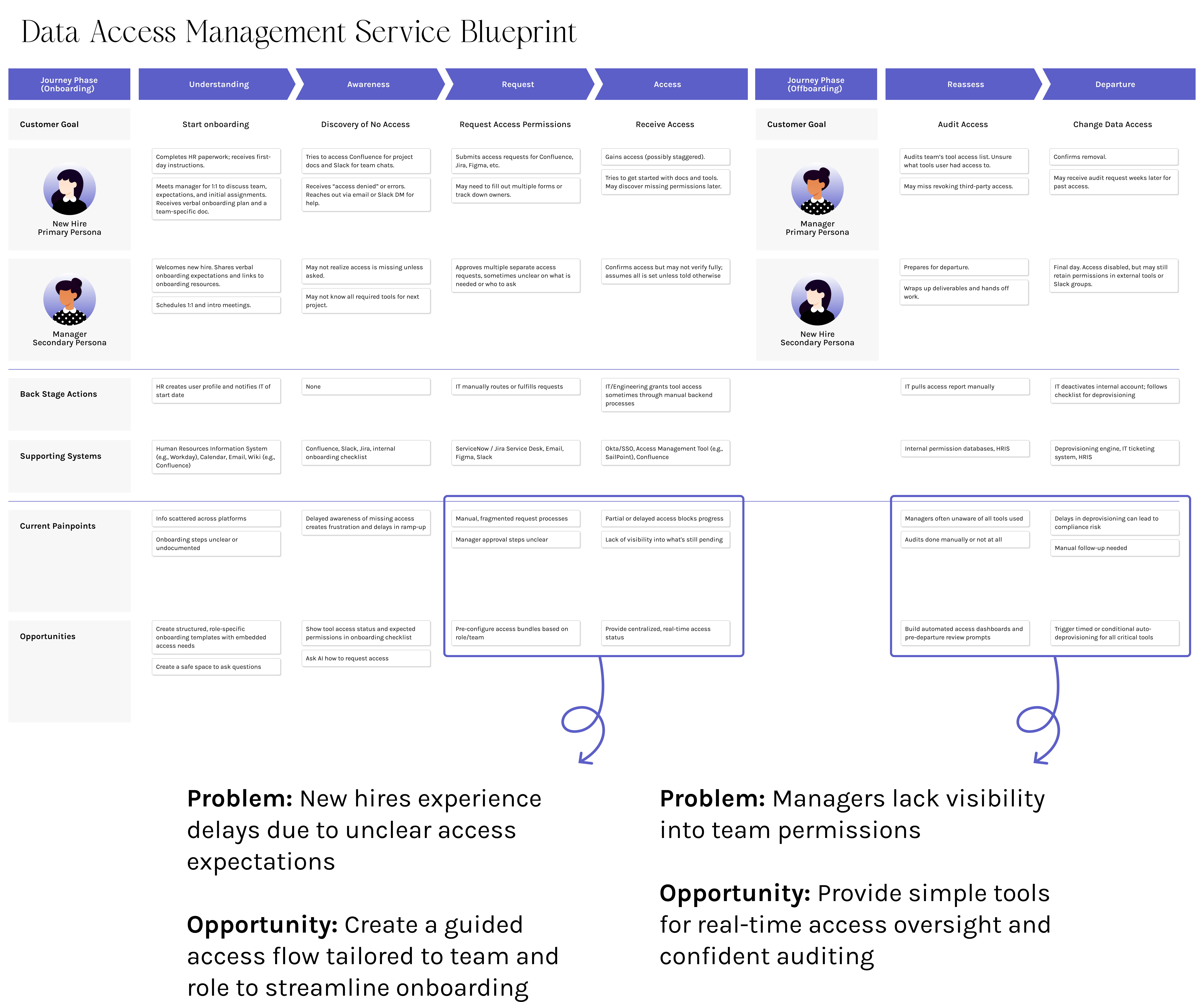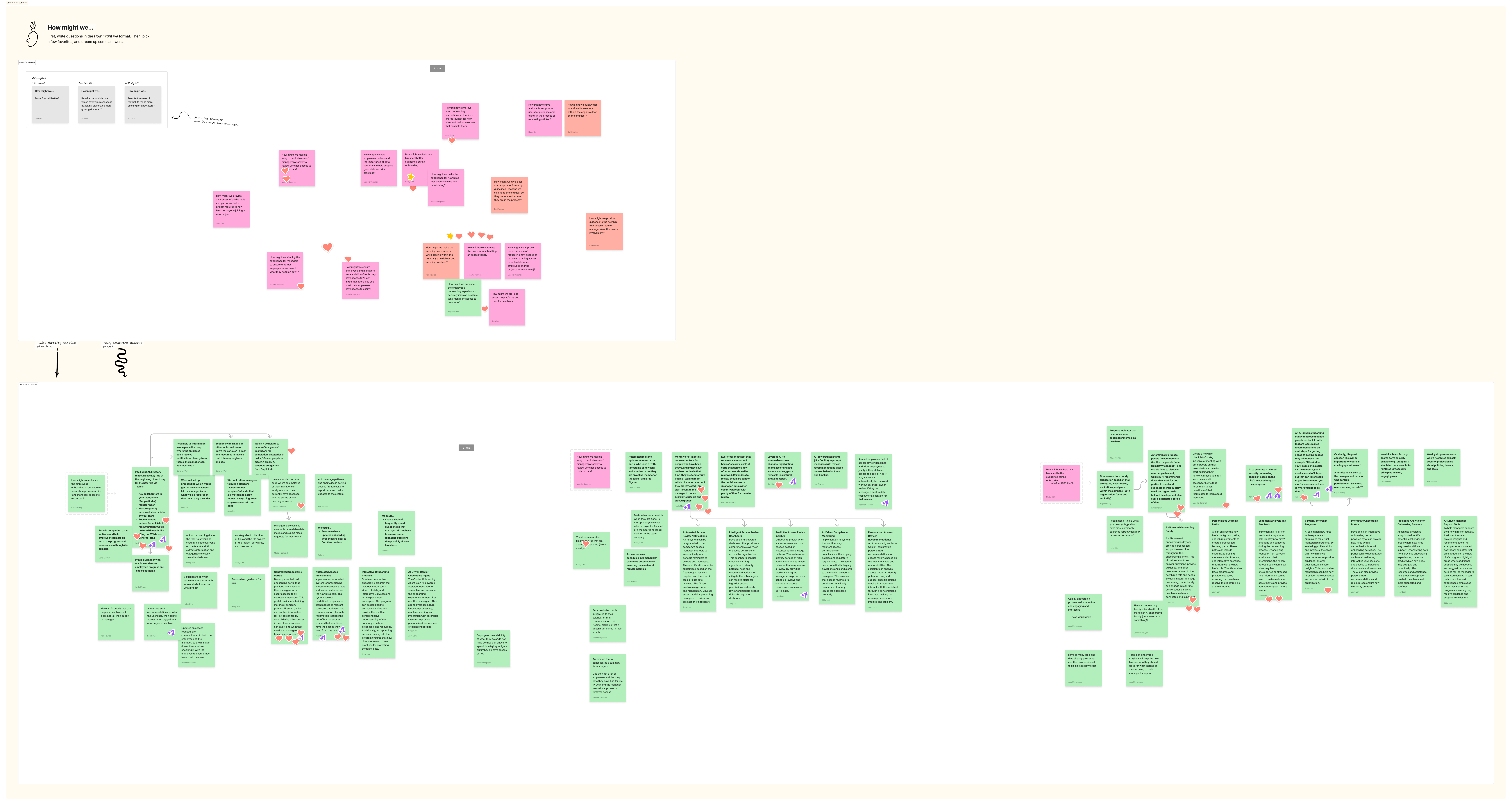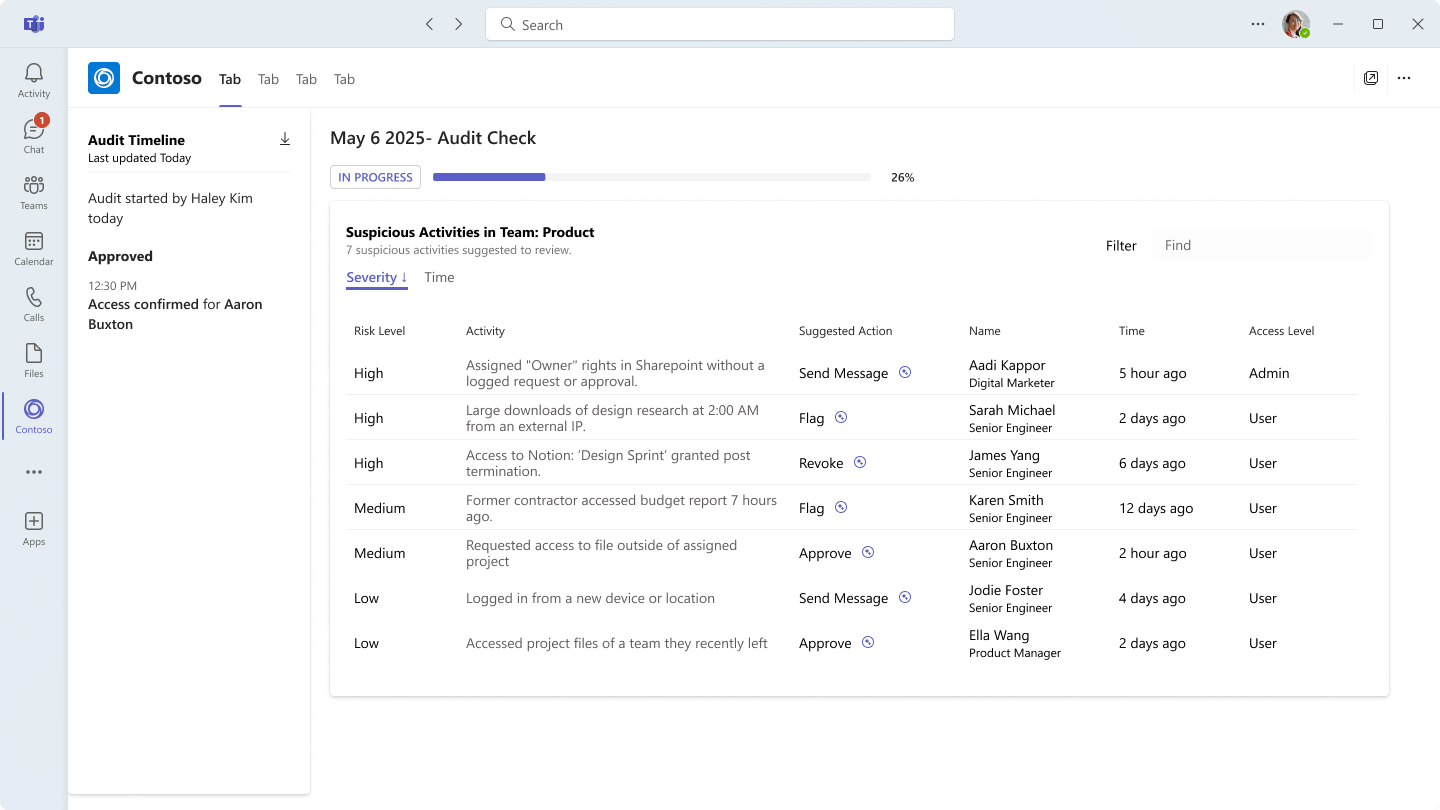➺ The Access Dashboard (Employees) gives users a centralized view of their access requests, helping them track progress and stay proactive.
Key sections include:
Short Minimal Form – Streamlined fields for quick completion
Copilot Suggestions – Tooltip-based guidance that provides context from past requests without disrupting flow
Request Status Tracker – Real-time updates on pending, approved, or denied requests
Curated for You – Personalized recommendations for tools or datasets based on request history and upcoming expirations
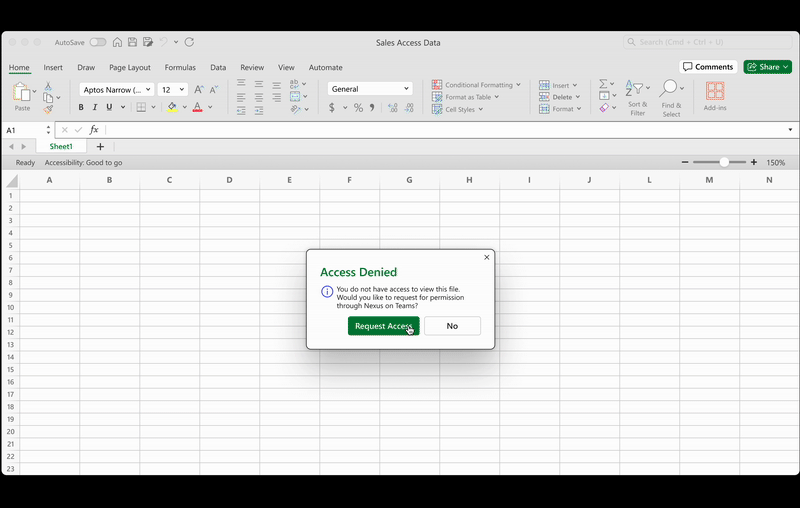
Managers: Auditing Process
➺ The Access Dashboard (Managers) helps managers oversee permissions, monitor compliance, and manage role-based access with AI-powered insights.
Key sections include:
Priority Actions – Highlights urgent tasks based on deadlines, team activity, and calendar events
Team Compliance Status – Surfaces gaps in compliance and outlines recommended actions
Access Issues & Gaps – Flags critical access risks that need managerial attention
Access Distribution by Role – Visualizes team access levels to support thoughtful provisioning and reduce risk
